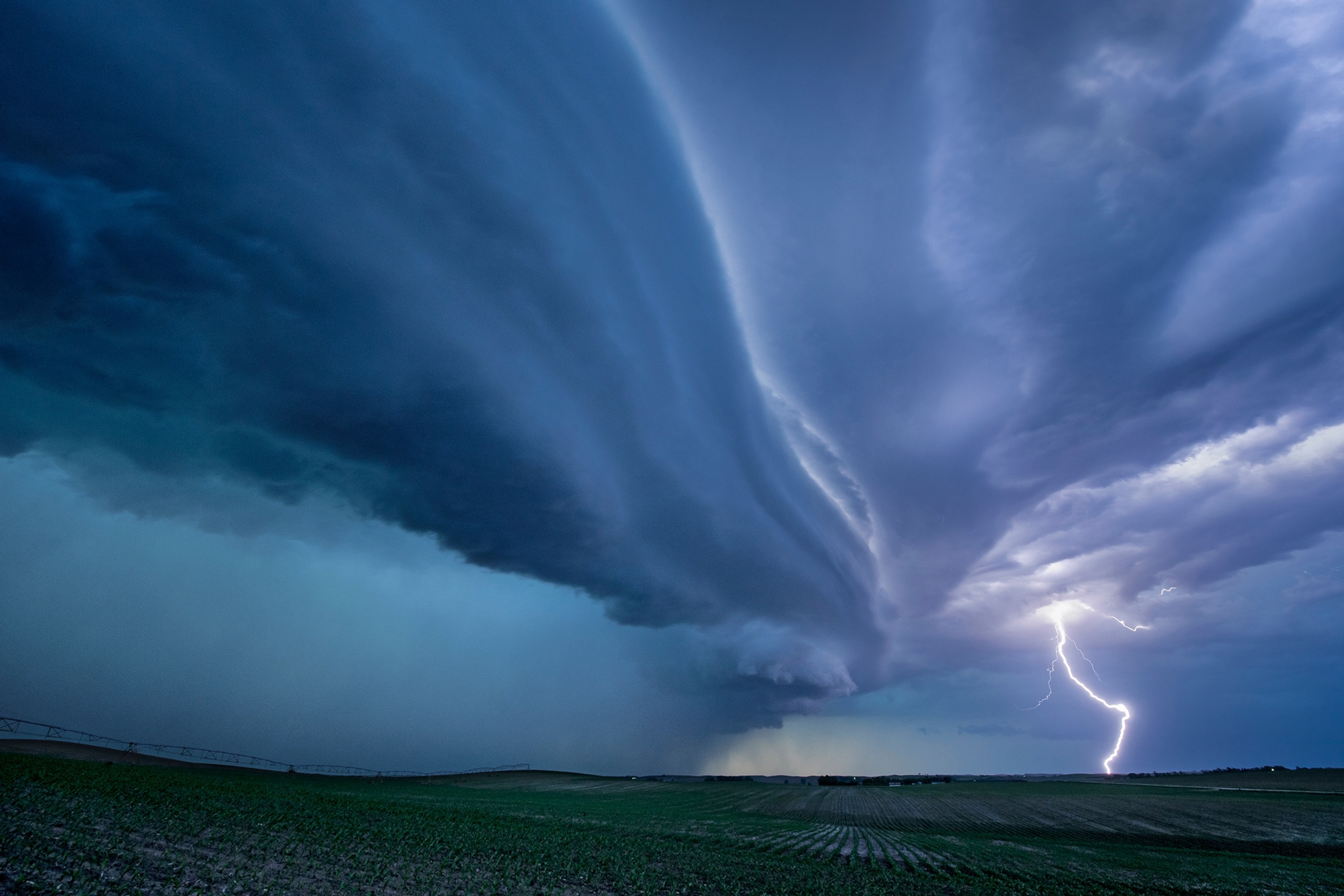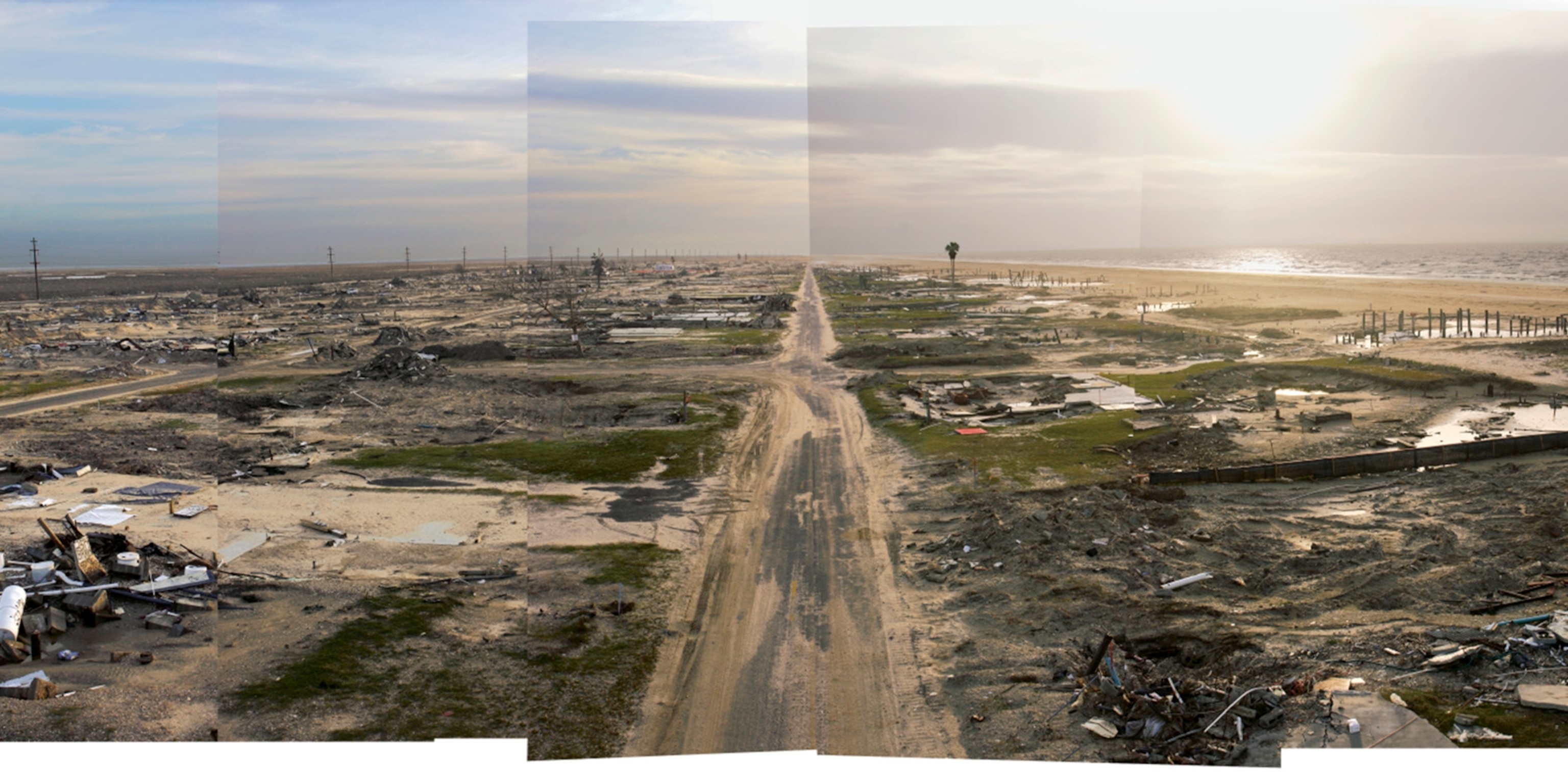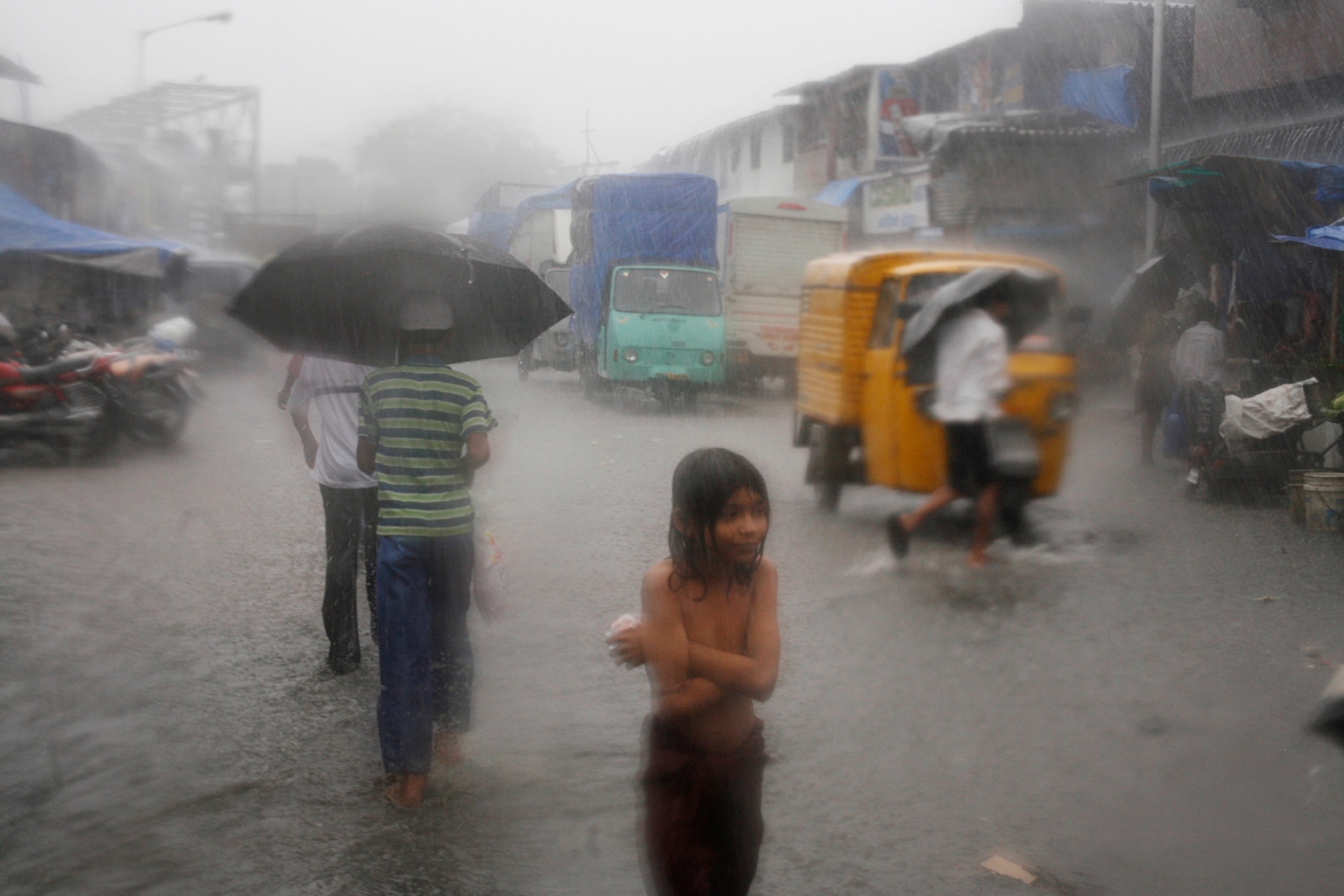
Once derided, ways of adapting to climate change are gaining steam
Recognition is spreading that communities need to build resilience to climatic and coastal threats even as the world seeks ways to curb emissions driving global warming.
From chronically flooded Midwestern towns to fire-charred California suburbs, from Bangladesh’s sodden delta to low island nations facing rising seas, a long-underplayed strategy for cutting risks related to human-driven climate change is coming to the fore—adaptation.
Through 30 years of efforts to limit global warming, the dominant goal was cutting emissions of heat-trapping gases, most importantly carbon dioxide from burning fossil fuels. Efforts to adapt communities or agriculture to warming and the related rise in seas and other impacts were often seen as a copout.
The spotty nature of adaptation efforts so far can be seen in the aftermath of Hurricane Michael—where one reinforced, raised home famously survived, nearly alone, along Mexico Beach, Florida, after the strongest Panhandle hurricane in at least 155 years. In the Camp Fire that devastated Paradise, California, and killed 85 people, a sprinkling of houses built and maintained to withstand embers survived, but—again—were the rare exception.
But signs are emerging that a significant shift is under way, dividing the climate challenge into two related, but distinct, priorities: working to curb greenhouse gases to limit odds of worst-case outcomes later this century while boosting resilience to current and anticipated climatic and coastal hazards with just as much fervor. There’s action from the top down, and—perhaps more significant in the long run—from the bottom up.
The most prominent signs of the rising profile of adaptation came with the launch in October of a Global Commission on Adaptation and a December commitment of $200 billion in climate finance over five years by the World Bank and partners.
The commission is led by former United Nations Secretary General Ban Ki-moon, philanthropist and entrepreneur Bill Gates, and the World Bank’s chief executive officer, Kristalina Georgieva. This was a particularly significant move for Gates, whose philanthropic work and personal investments on climate had so far focused on breakthrough clean-energy technologies. (Learn more about this effort.)
The commission’s first task is to produce a report on innovative approaches to spreading and financing climate adaptation, to be presented at a United Nations climate summit in late September. There are plenty of questions. For example, some climate adaptations can worsen climate change—with energy-thirsty air conditioning the simplest example. But other adaptations, like restoring stripped land to forest or planting coastal mangroves can have the triple benefit of buffering floods, absorbing carbon dioxide, and providing habitat for wildlife. And sometimes climate benefits can come from restoring wildlife, as is happening with beaver introduction in southern Utah and central Washington State, for example, under a Climate Adaption Fund managed by the Wildlife Conservation Society.
In its December announcement of climate financing for developing countries, the World Bank stressed that, for the first time, its $100-billion portion would be evenly split between investments cutting emissions and boosting resilience.
“We must fight the causes, but also adapt to the consequences that are often most dramatic for the world’s poorest people,” said Georgieva, the bank’s leader.
Adaptation – “a kind of laziness”?
It wasn’t always this way.
As early as the 1990s, and then in climate-treaty talks in 2002, there was talk of the need to adapt to a changing climate even as nations struggled to curb emissions. But what some called the “A” word was anathema to many global warming campaigners, who saw efforts to adapt to climate extremes as capitulation and a distraction from the need to curb emissions from fossil-fueled smokestacks and tailpipes, cattle pens, cement factories, and felled forests.
The shift toward accepting parallel efforts to cut our rising influence on the climate system and its threatening influence on us has been building for several years.













In his 2013 book The Future, former Vice President Al Gore acknowledged that he made a mistake in 1992 by disparaging adaptation as a “kind of laziness” in Earth in the Balance, his bestselling manifesto for climate action. His revised view? Those resisting action on emissions were wrong to tout adaptation alone, Gore wrote. But he said he was “wrong in not immediately grasping the moral imperative of pursuing both policies simultaneously, in spite of the difficulty that poses.”
The 2015 Paris Agreement on climate change was the first pact in a quarter century of climate diplomacy to include a global goal on adaptation aimed at “strengthening resilience and reducing vulnerability to climate change.” Since then a steady string of fiery, stormy, costly climatic calamities has vividly illustrated the price of unaddressed vulnerability, and fresh reports from the United Nations and independent researchers have meanwhile charted the unrelenting rise in greenhouse emissions.
The day after Thanksgiving, the Trump administration released the latest section of a periodic National Climate Assessment pointing to a role for global warming in everything from heat waves to gully-washing downpours. Media coverage tended to focus on the contrast between dismissive statements on climate change by President Donald Trump and the report’s compendium of evidence of enormous risk. Largely missed was the assessment’s argument for building adaptable, resilient communities, institutions and businesses. At the same time, the report warned that the enormous momentum in the climate system guarantees no quick benefit from even a heroic global cut in emissions—leaving many vulnerable people at risk.
Benefits of resilience
There is also a more practical rational for boosting resilience. It almost always amounts to a bargain.
As the Fourth National Assessment put it, “Proactive adaptation initiatives—including changes to policies, business operations, capital investments, and other steps—yield benefits in excess of their costs in the near term, as well as over the long term.”
In an interview last weekend, Katharine Hayhoe, a lead author of this and the previous U.S. climate assessment, released in 2014, cited another welcome aspect of the adaptation side of building a sustainable relationship with climate: It’s a pursuit that she has found resonates in sectors of society across the political spectrum.
“I speak frequently to water planners, farmers, ranchers, and they all get it,” said Hayhoe, who directs the Climate Science Center at Texas Tech University and is well known for speaking of her Christian beliefs and climate science concerns.
The argument for a big boost in adaptation work, along with cutting emissions, she said, comes from robust science showing many places are already deeply vulnerable and an unabated rise in greenhouse gas levels tips the odds steadily toward further trouble.
“If I could pick a single way to explain climate change to everyone it would be threat multiplier,” she said. “It’s not either-or.”
Hayhoe said an encouraging sign of community efforts on adaptation emerged during the drafting of the latest report. In the 2014 assessment, the team had planned to include case studies from around the country, but had a tough time finding good ones. This time there was no trouble peppering the report with examples of what’s possible. You can explore some at this link.
From preventing wildfire to living with it
In the combustible West, groups offering assistance to towns seeking to coexist with wildfire rather than try in vain to suppress it say they’ve seen a substantial burst of interest.
As of 2017, only two California communities at risk from wildfire, Mammoth Lakes and San Diego, had signed on for help from a Community Planning Assistance for Wildfire program—run by two nonprofit groups and supported by a foundation and the U.S. Forest Service. The small organization helps municipal planners and fire agencies shape long-term development strategies in ways that allow fire to do what it has long done in such ecosystems—a sharp shift in culture from the days of aggressive fire suppression.
In 2018, 14 of the 27 communities that applied for help were from California, said Molly Mowery, the president of Wildfire Planning International, one of the partners in the effort. Two new projects are getting under way, she said, both in communities that experienced bad fires—Redding and Mariposa County.
Given the rising interest in resilience and adaptation among both homeowners and community officials in fire country, many working to boost sustainability lament that relevant budgets, at both the federal and state level, are grossly insufficient to enable more work. In late November, a Washington Post story touched on two examples, reporting that the University of California’s extension program, which provides outreach to homeowners on wildfire risk reduction, has seen its budget cut almost in half.
The budget crunch isn’t limited to regions facing fire risk. The Federal Emergency Management Agency this year is offering nearly $400 million in grants for efforts to cut flood risk and general “pre-disaster mitigation” by towns, states, and tribal or territorial governments. But that’s a fraction of what’s needed, by a host of accounts. (The deadline for applications is January 31.)
A Match.com for flooded towns and scientists
One low-budget path toward resilience evolved as community activists in flooded towns connected with volunteer scientists.
Several years ago, Helen Lekavich, a hair stylist and massage therapist in Midlothian, Illinois, on the southern fringe of Chicago, got fed up with chronic rain-fed flooding, recruited neighbors into a group called the “Floodlothian Five” and successfully pushed for a comprehensive “RainReady” flood-reduction plan, designed with the help of a Chicago nonprofit, the Center for Neighborhood Technology (see video).
There is now a national organization, Flood Forum USA, working to help other communities build resilience in the same way. On the website, concerned citizens can sign up to be a “flood reporter,” join an existing community’s forum (here’s a map), or build a network around their own flooding issue.
One critical need is scientific advice, and that’s where another partner, the American Geophysical Union, comes in. Five years ago, the professional society for earth scientists launched what it calls Thriving Earth Exchange, essentially a Match.com for communities facing resilience issues and volunteers from its membership with skills in relevant fields, like hydrology or remote sensing.
In Bangladesh, long the symbol of human vulnerability to flooding, engineers and officials have been testing ways to build up lands by better managing the huge flows of sediment and water washing from the Himalaya through the country's great deltas. There are challenges but there is also clearly a chance to sustain livelihoods and limit dangers even as sea level rises, according to a recent report in Science magazine.
Elsewhere, as the BBC recently reported, farmers have expanded a traditional method of growing a range of vegetable crops on long floating mats of woven hyacinth plants that remain productive even when heavy monsoons make conventional farming impossible.
Enduring islands, managed retreat
Some small island nations are in deep trouble, literally, even at a mid-range projection for sea-level rise by 2100. But others are exploring ways to keep up with the rising waters as much as possible.
In the Marshall Islands, long among the small island states most threatened by rising seas, leaders have called for rich countries to ramp up emissions reductions but are also exploring home-grown solutions like dredging sand from a lagoon to help build up the capital atoll, Majuro.
In some situations, there’s evidence that low reef-fringed islands can persist and even enlarge—even in parts of the world where local sea levels are rising faster than the global average. Paul Kench, a geographer at the University of Auckland, has published research over 15 years showing this effect in both the Indian Ocean and Pacific. In his latest paper, Kench used satellite imagery to track 40 years of change in all 101 islands comprising the Pacific atoll nation Tuvalu. Three quarters of the islands gained area, showing that islands are dynamic features.
(Read more about island resiliency.)
The bigger challenge, of course, is that people crave coasts and, in this case, development would need to be focused in the interior to maintain the dynamics necessary for persistence. The lure of the shore is the same whether on scattered oceanic islands or Long Island, New York, where local communities’ quest for economic growth has slowed efforts to build and plan with a long-term view, in which rising seas are the norm, with only the rate uncertain.
The term of art for reconfiguring communities to leave room for coastal dynamics, storms, and projected sea-level rise is “managed retreat.”
Adapt Virginia, a hub for resilient planning in that state, has compiled a detailed set of case studies in managed retreat, from New York City’s Staten Island to Ventura, California. It’s costly, often involving government buyouts of coastal properties. But the calculation remains that in most cases the long-term benefits, which include restored ecosystems, outweigh the up-front cost.
More reasons for urgency
In the meantime, a string of studies, along with an October special report from the United Nations Intergovernmental Panel on Climate Change, have increasingly linked human-driven global warming to the intensity and size of heat waves, potent downpours, coral reef die-offs, some aspects of hurricanes in some regions, coastal flooding, the spread of tropical diseases, and other hazards.
Another source of concern is accumulating research revealing patterns of extraordinarily extreme weather through the last several thousand years in places now heavily built and populated. Scientists dissecting cores of layered ancient marsh and lake mud and other clues to past climate conditions have revealed spasms of frequent, powerful hurricanes even in past cooler periods around Puerto Rico, extreme hill-scouring rainstorms in Vermont, and century-long megadroughts in Ghana—meaning calamities that might be perceived as “unprecedented” are in fact simply rare, and thus unmeasured, threats.
All of this reinforces the reality that vulnerability reduction is essential with or without global warming, said Richard J.T. Klein, a longtime analyst of climate risk and policy options at the Stockholm Environment Institute.
“There is momentum developing and it’s long overdue,” said Klein, who signed on this fall to direct science and innovation at the Global Center on Adaptation, which is managing the adaptation commission’s work along with the World Resource Institute. “This is about a current risk that’s bad enough to take action to start with, and that is already increasing.”
Related Topics
You May Also Like
Go Further
Animals
- Octopuses have a lot of secrets. Can you guess 8 of them?
- Animals
- Feature
Octopuses have a lot of secrets. Can you guess 8 of them? - This biologist and her rescue dog help protect bears in the AndesThis biologist and her rescue dog help protect bears in the Andes
- An octopus invited this writer into her tank—and her secret worldAn octopus invited this writer into her tank—and her secret world
- Peace-loving bonobos are more aggressive than we thoughtPeace-loving bonobos are more aggressive than we thought
Environment
- Listen to 30 years of climate change transformed into haunting musicListen to 30 years of climate change transformed into haunting music
- This ancient society tried to stop El Niño—with child sacrificeThis ancient society tried to stop El Niño—with child sacrifice
- U.S. plans to clean its drinking water. What does that mean?U.S. plans to clean its drinking water. What does that mean?
- Food systems: supporting the triangle of food security, Video Story
- Paid Content
Food systems: supporting the triangle of food security - Will we ever solve the mystery of the Mima mounds?Will we ever solve the mystery of the Mima mounds?
History & Culture
- Strange clues in a Maya temple reveal a fiery political dramaStrange clues in a Maya temple reveal a fiery political drama
- How technology is revealing secrets in these ancient scrollsHow technology is revealing secrets in these ancient scrolls
- Pilgrimages aren’t just spiritual anymore. They’re a workout.Pilgrimages aren’t just spiritual anymore. They’re a workout.
- This ancient society tried to stop El Niño—with child sacrificeThis ancient society tried to stop El Niño—with child sacrifice
- This ancient cure was just revived in a lab. Does it work?This ancient cure was just revived in a lab. Does it work?
Science
- The unexpected health benefits of Ozempic and MounjaroThe unexpected health benefits of Ozempic and Mounjaro
- Do you have an inner monologue? Here’s what it reveals about you.Do you have an inner monologue? Here’s what it reveals about you.
- Jupiter’s volcanic moon Io has been erupting for billions of yearsJupiter’s volcanic moon Io has been erupting for billions of years
- This 80-foot-long sea monster was the killer whale of its timeThis 80-foot-long sea monster was the killer whale of its time
Travel
- This town is the Alps' first European Capital of CultureThis town is the Alps' first European Capital of Culture
- This royal city lies in the shadow of Kuala LumpurThis royal city lies in the shadow of Kuala Lumpur
- This author tells the story of crypto-trading Mongolian nomadsThis author tells the story of crypto-trading Mongolian nomads







